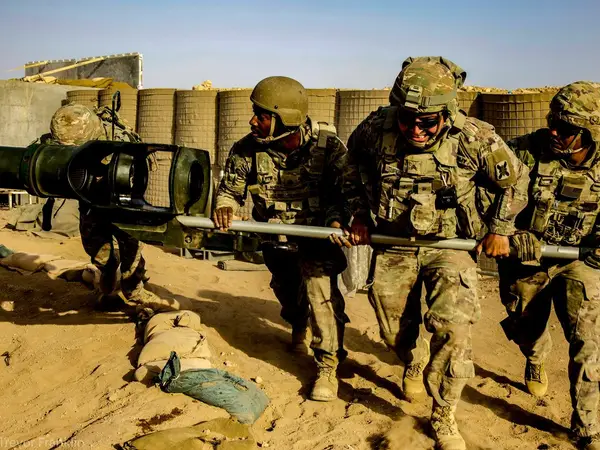The US military carried out air strikes in Syria Thursday night against Iran-backed militia groups who it blamed for a deadly drone attack on its forces.
The attack killed an American contractor, injured another, and wounded five US troops earlier in the day, the Pentagon said.
Both the attack on US personnel and the retaliation were disclosed by the Pentagon at the same time late on Thursday.
The attack against took place at a coalition base near Hasakah in northeast Syria at approximately 1:38 p.m. (1038 GMT) on Thursday, it said.
The US intelligence community assessed that the one-way attack drone was Iranian in origin, the military said, a conclusion that could further aggravate already strained tensions between Washington and Tehran.
The decision to launch the drone attack against US forces came two weeks after Iran and Saudi Arabia agreed to re-establish relations with Chinese mediation, a development that many analysts saw as a sign of tension-reduction in the region.
US Defense Secretary Lloyd Austin said the retaliatory strikes were carried out at the direction of President Joe Biden and targeted facilities used by groups affiliated with Iran's Islamic Revolutionary Guard Corps (IRGC).
"The air strikes were conducted in response to today’s attack as well as a series of recent attacks against Coalition forces in Syria by groups affiliated with the IRGC," Austin said in a statement.
"No group will strike our troops with impunity."
Three service members and a contractor required medical evacuation to Iraq, where the US-led coalition battling the remnants of Islamic State has medical facilities, the military said.
The other two wounded American troops were treated at the base in northeast Syria, the Pentagon said.
The number of casualties - one killed and six wounded - is highly unusual, even though attempted drone attacks against US personnel in Syria are somewhat common.
US troops have come under attack by Iranian-backed groups about 78 times since the beginning of 2021, according to Army General Erik Kurilla, who oversees US troops in the Middle East as the head of Central Command.
Kurilla, testifying to the House Armed Services Committee earlier on Thursday, cautioned about Iran's fleet of drones.
"The Iranian regime now holds the largest and most capable unmanned aerial vehicle force in the region," he said.
Three drones targeted a US base in January in Syria's Al-Tanf region. The US military said two of the drones were shot down while the remaining drone hit the compound, injuring two members of the Syrian Free Army forces.
U.S. officials believe drone and rocket attacks are being directed by Iran-backed militia, deployed in Syria for more than decade to support the country’s controversial president Bashar al-Assad and expand Tehran’s influence in the region.
The attack came just weeks after the top US general, Mark Milley, visited northeast Syria to assess the mission against Islamic State and the risk to U.S. personnel.
Asked by reporters traveling with him at the time if he believed the deployment of roughly 900 US troops to Syria was worth the risk, Milley tied the mission to the security of the United States and its allies, saying: "If you think that that's important, then the answer is 'Yes.'"
"I happen to think that's important," Milley said.
Thousands of Islamic State fighters are in detention facilities guarded by Kurdish-led Syrian Democratic Forces, America's key ally in the country.
American officials say that Islamic State could still regenerate into a major threat.
The mission, which former President Donald Trump nearly ended in 2018 before softening his withdrawal plans, is a remnant of the larger global war against terrorism that had included once the war in Afghanistan and a far larger U.S. military deployment to Iraq.
Reporting by Reuters
